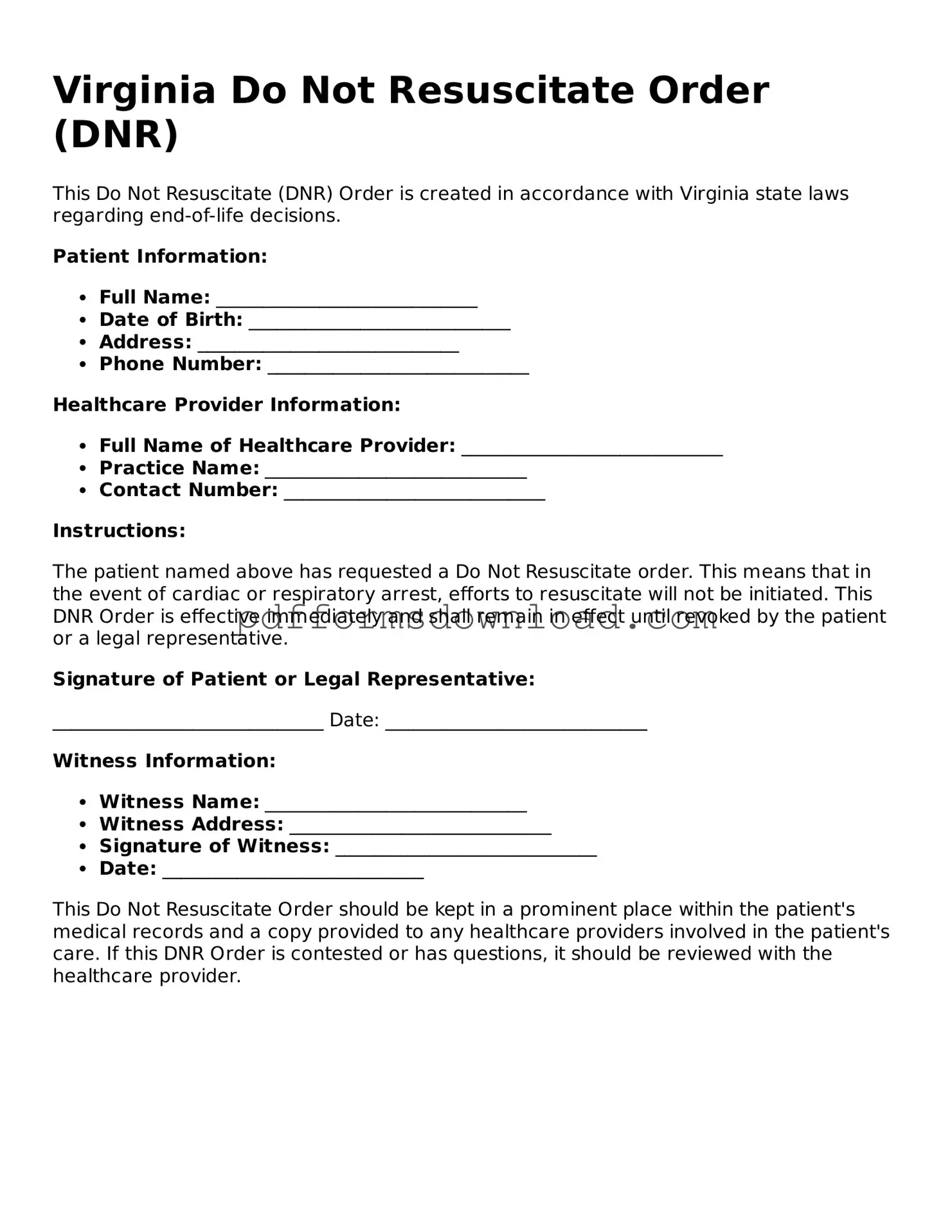What is a Do Not Resuscitate (DNR) Order in Virginia?
A Do Not Resuscitate Order is a medical order that instructs healthcare providers not to perform cardiopulmonary resuscitation (CPR) if a patient’s heart stops beating or if they stop breathing. In Virginia, this order is typically used by individuals with serious health conditions who wish to avoid aggressive life-saving measures in the event of a medical emergency.
How can I obtain a DNR Order in Virginia?
To obtain a DNR Order, a patient must first discuss their wishes with their healthcare provider. The physician will evaluate the patient’s medical condition and, if appropriate, complete the DNR Order form. This form must be signed by both the patient (or their legal representative) and the physician to be valid. It is essential to ensure that the form is filled out correctly and kept in an accessible location.
Who can request a DNR Order?
Any adult who is capable of making their own medical decisions can request a DNR Order. In cases where the patient is unable to make decisions, a legally appointed representative, such as a power of attorney or guardian, may make the request on their behalf. It’s important for the representative to understand the patient’s wishes and values regarding end-of-life care.
Is a DNR Order the same as a living will?
No, a DNR Order and a living will are not the same. A DNR specifically addresses the decision to forgo CPR and other resuscitation efforts. A living will, on the other hand, is a broader document that outlines a person's wishes regarding various medical treatments and interventions in the event they become incapacitated. While a DNR can be part of a living will, they serve different purposes.
Can a DNR Order be revoked?
Yes, a DNR Order can be revoked at any time by the patient or their legal representative. To revoke the order, the patient should communicate their wishes to their healthcare provider and ensure that any copies of the DNR Order are destroyed or marked as revoked. It’s crucial to inform family members and caregivers of the change to avoid confusion during a medical emergency.
Where should I keep my DNR Order?
The DNR Order should be kept in a place that is easily accessible to both the patient and healthcare providers. Many individuals choose to keep a copy in their medical records, while others may carry a wallet-sized version. It is also advisable to inform family members and caregivers about the location of the document so that it can be quickly retrieved if needed.
